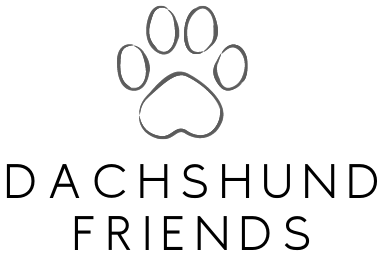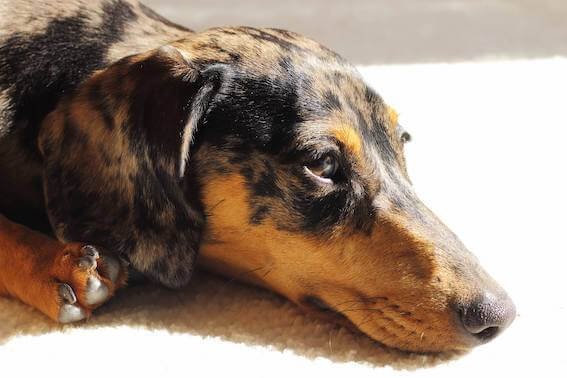What is IVDD (Intervertebral Disc Disease) and why are Dachshunds at risk?
When we were researching the Dachshund breed before getting our dog, one concern that repeatedly came up was IVDD (Intervertebral Disc Disease). You might have encountered this term as well, and it’s an important topic because around 1 in 4 Dachshunds will experience IVDD at some point in their lifetime. Given the frequency of IVDD in this breed, it’s essential for Dachshund owners to understand the condition, the risks, and the steps that can be taken to manage or minimize its impact. Proper insurance coverage is crucial, as treating IVDD, especially when surgery is needed, can result in significant veterinary costs.
What is IVDD?
IVDD, which stands for Intervertebral Disc Disease (sometimes also referred to as Slipped Disc Disease) is a degenerative spinal condition that affects the discs between the vertebrae, which function much like cushions absorbing shock and maintaining the spine's flexibility. Over time, these discs can calcify or harden, meaning that they don’t absorb shock as well as a healthy disc, and making them more prone to herniation. This can cause compression of the spinal cord, leading to pain, difficulty moving, and in severe cases, paralysis.
All dogs can be affected by degeneration and calcification of their discs as they age, however for dachshunds this typically can happen at a much earlier age, in part due to their long backs which can be more easily under strain, but a number of other factors play into the potential risks.
What makes Dachshunds particularly vulnerable?
Dachshunds are a "chondrodystrophic" breed, meaning they have been bred for short legs. However, it is the genetic traits responsible for their short legs, not their long backs, that increase the likelihood of developing IVDD. The genetics behind their disproportionate limbs make their spinal discs prone to calcification at a younger age compared to other breeds.
There are two main types of IVDD:
Hansen Type I: Most common in chondrodystrophic breeds, this type involves the sudden extrusion of disc material, causing acute pain and spinal cord compression.
Hansen Type II: A slower, degenerative process where the disc material gradually impinges on the spinal cord, leading to chronic pain.
Risk factors for IVDD in Dachshunds
As mentioned, IVDD is partly inherited, meaning that a dog’s genetic makeup plays a significant role. Dogs with a family history of IVDD or early disc calcification are more prone to developing the condition.
However, lifestyle factors like obesity and improper exercise also increase the risk. Excess weight places extra strain on the spine, making it more susceptible to injury. Age is another factor: while IVDD can strike Dachshunds at a younger age than other dogs, the risk continues to grow as they age.
How to reduce the risk of IVDD in Dachshunds
Although IVDD cannot be entirely prevented, there are steps Dachshund owners can take to minimize the risk:
Breeding considerations: If you are getting your Dachshund from a breeder, ask about IVDD in their lineage. The Kennel Club offers an IVDD Screening Programme, where breeders can check for early signs of disc calcification in breeding dogs.
Exercise and muscle development: Engaging your dog in moderate exercise can help build muscles that support the spine. However, care should be taken to avoid activities that put too much strain on the back, such as jumping off furniture or running up and down stairs. Consider ramps for beds and couches.
From personal experience, our approach with our boy was cautious but not totally restrictive, as from talking to our breeder we believed his overall inherited risk is low due to low incidence of IVDD within the previous dogs they had bred. We also read some discussion around how allowing the dog to develop their muscles to support the spine through exercise can potentially help reduce risk, provided this is not too extreme. So for example, we have always avoided letting our dog jump from high places (he will always be supervised while on the sofa or the bed) but we have let him carefully go up and down some steps once he was big enough to be able to do this unaided. However this is ultimately a personal decision as to how much risk you are prepared to take with this.
Weight management: Keeping your Dachshund at a healthy weight reduces the strain on their spine and discs. A balanced diet and regular exercise are crucial to maintaining your dog’s overall health.
Harnesses over collars: Using a harness instead of a collar when walking your Dachshund can reduce the pressure on their neck and spine. We have always preferred using a harness for this reason, and have also written a previous post about our choices of the best harnesses for dachshunds which explores this in a bit more detail.
Timing of neutering: Recent studies suggest that neutering before the age of 12-24 months may increase the risk of IVDD. This is possibly due to incomplete physical development at the time of surgery. The decision on whether or not to neuter your dachshund is a personal choice, however the possible links to IVDD shouldn’t be ignored here if you are looking to ensure your dog’s risk is as low as possible.
What are the signs and symptoms of IVDD?
Common signs of IVDD include:
Sudden back or neck pain
Reluctance to move or difficulty walking
Yelping or whimpering when touched or when moving
In more severe cases, weakness in the limbs or even paralysis
Loss of bladder or bowel control in extreme cases
If you suspect your Dachshund is suffering from IVDD, immediate veterinary attention is critical. Depending on the severity, your dog may require anything from medication and crate rest to surgery.
Treatment options for IVDD
There are two primary approaches to treating IVDD in dachshunds:
Conservative treatment: This option is recommended for milder cases where there is little to no loss of limb function. It includes strict rest (often crate rest), medication for pain management, and possibly physical therapies like laser treatment or acupuncture.
Surgical treatment: In more severe cases, especially where paralysis has occurred, surgery is often necessary to remove the herniated disc material. Surgery must be performed quickly in cases where the dog has lost deep pain sensation in their limbs, as this increases the chances of a successful outcome
Pet insurance considerations for IVDD
If your dachshund does sadly require surgical intervention from a vet to deal with a case of IVDD, this can run up quite a significant bill, which is why having a really solid insurance plan in place is highly recommended to ensure you don’t run into any nasty shocks if your sausage dog hurts their back. We were advised to look for a cover that provides at least £10,000 (ideally covering per condition as the surgery if required can cost this much), and that offers lifetime cover for each condition in case of recurrence, as some dachshunds can have multiple issues with IVDD through their lifetime which may leave you out of pocket.
We currently have insurance with Many Pets (formerly Bought By Many) as they offer a policy that covers up to £15,000 per year, so we felt this gave us the most peace of mind when it comes to ensuring our boy is covered for any potential instances of IVDD. The premium wasn’t the cheapest, but we felt it was important to us to have that extra level of cover. They do offer the ability to pay the first 20% of each claim to reduce the overall monthly premium (this was the option we went with to make it more affordable). There are however several insurers out there that offer cover levels of £10,000+ so it’s worth shopping around to find the best cover for you - just make sure the policy definitely covers conditions like IVDD.
Intervertebral Disc Disease (IVDD) is a significant concern for Dachshund owners. While it’s impossible to completely eliminate the risk, you can take steps to minimize the likelihood of your dog suffering from this painful condition. Understanding the genetic and environmental factors at play, keeping your dog healthy and at an ideal weight, and choosing the right pet insurance will help ensure that if the worst happens, you and your Dachshund are as prepared as possible.

